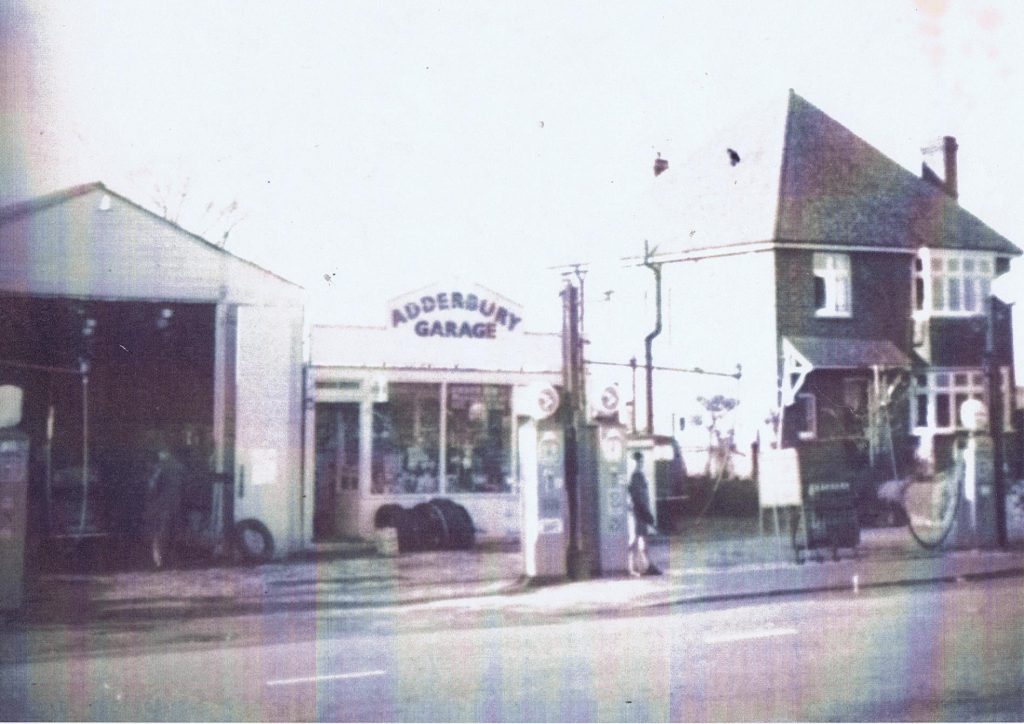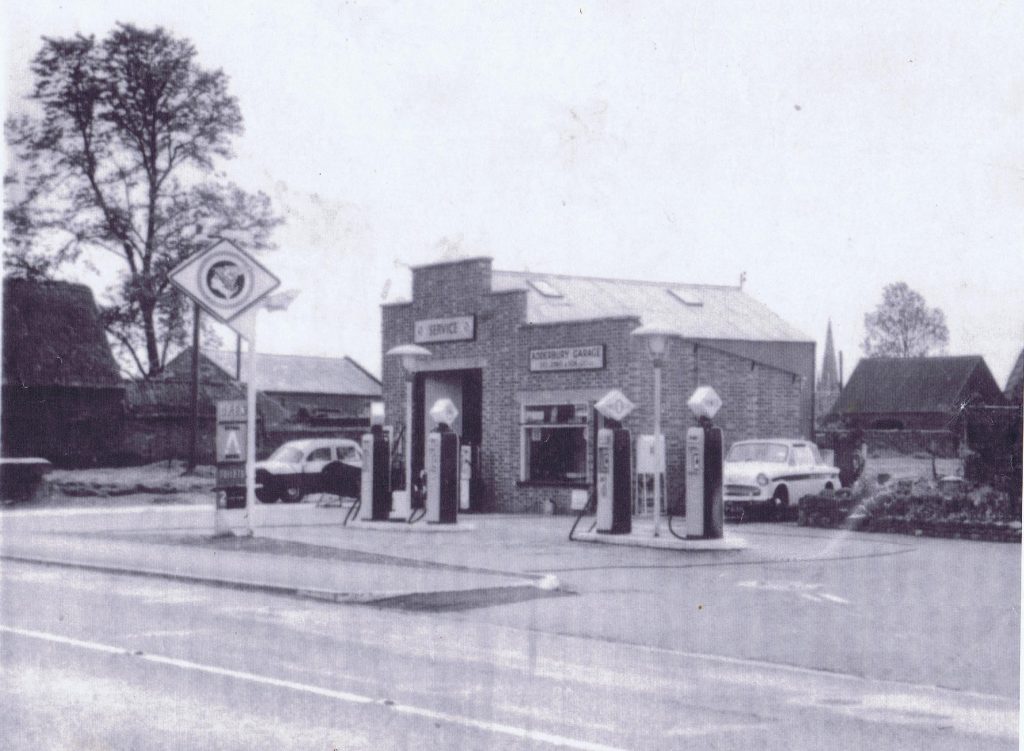Richard Plackett, a local carrier, decided to move from horse and carrier’s cart into motorised transport based at Three Ways Adderbury. He was the father of Lucy who gave money in 1938 for a community/playing field
The field behind the house known as Plackett’s field and the petrol pumps were the reason that the Hollis family bought the property as they had an interest in horses possibly more so than selling petrol, as I understand the daughter was a successful eventer. When they sold to the petrol company they bought a horse riding school.
In 1957 on December 3rd, the Jones family, consisting of my mother Bettina (Betty) and my step father Albert (Jerry) and step brother Allan arrived in Adderbury to take on the running of a garage which had been bought by the National Benzole Company.
Jerry, with the financial support of his father George, had since the 1930s had a garage on the Alum Rock road in Birmingham which was kept working by his sister during the war, while he was stationed on Benbecula. At this time he also lost Allan’s mother to cancer.
He and my mother married in 1953 and he, succumbing to the desire of my mother to take the children out of the city, asked the petrol company to let him know of any country sites for which they needed a manager. Two sites, that of Nell Bridge and of Adderbury were offered.
The Garage on the junction of the Oxford and Aynho Roads at Adderbury was typical of many at the time with petrol pumps mounted inside of the pedestrian pavement with arms that swung out to fuel the vehicles which were parked on the road or the unpaved area next to the kiosk.
It might be of interest here to mention that obtaining fuel via a petrol pump direct to the car did not happen in Britain until the early 1920s; petrol was sold in sealed two gallon cans and the move initially from hand operated pumps such as the Gilbert & Barker pumps used by Tommy & Edith Thacker further down the road only took place once customers accepted by the use of a sight glass that they were getting what they had paid for. On our way to catch the school bus from outside the Coach & Horses I would often talk with Mrs Thacker if a local was getting fuel and on occasion Mr Thacker in his workshop/storeroom.
Set back from our pumps which were, in fairness electric, was a dirt area with a wooden kiosk, which even by the standards of the day, was basic, but the saving grace from the petrol company’s point of view was the development potential which included a substantial house with a large front garden and a decent sized corrugated sheet metal workshop which had been built by Richard Plackett to house his Bus which offered the first motorised transport between Banbury and Oxford .
When we arrived and for some time afterwords a milking cow or two was kept in the field by Frank Neal – uncle to Anne who had the adjacent Green farm.
Soon after we arrived and with the removal of the front garden and kiosk and the shortening of the workshop, a new forecourt was created with the new pumps mounted centrally so that vehicles could come off the road for refuelling. All of this was long before the installation of the traffic lights on the junction.
The garage continued to grow with a car sales site (Jerry was not interested) leased to John “the Bishop” and later to Roy Betts. Fuel sales weathered the results of Suez crisis in 1956, the embargo in 1973 and the second crisis in 1979,some time after which Jerry could not agree terms with BP who had taken over via Shell from National Benzole as the landlords. So my parents retired to the Leys and the tenancy was then taken on by Derek Benefield from Deddington for a short time, before being sold in 1982 for the housing development you see to day , both on the immediate Garage site and latterly on the adjacent field. The house was demolished by a wrecking ball as part of the destruction scene in a TV production of “Blot on the Landscape. “
My mother was active in the WI being president for a while and father was heavily involved in the cricket Club, donating and maintaining the machinery. After my apprenticeship in agricultural engineering and a time abroad I returned to help father in the garage until he retired.
The First picture was taken during 1958 (I am stood by the pump) and the second picture was taken after the refurbishment in 1960 with the Neal’s barn, and church in the background. The final picture taken in the seventies shows the cars for sale and the traffic lights.
Bill Baker



